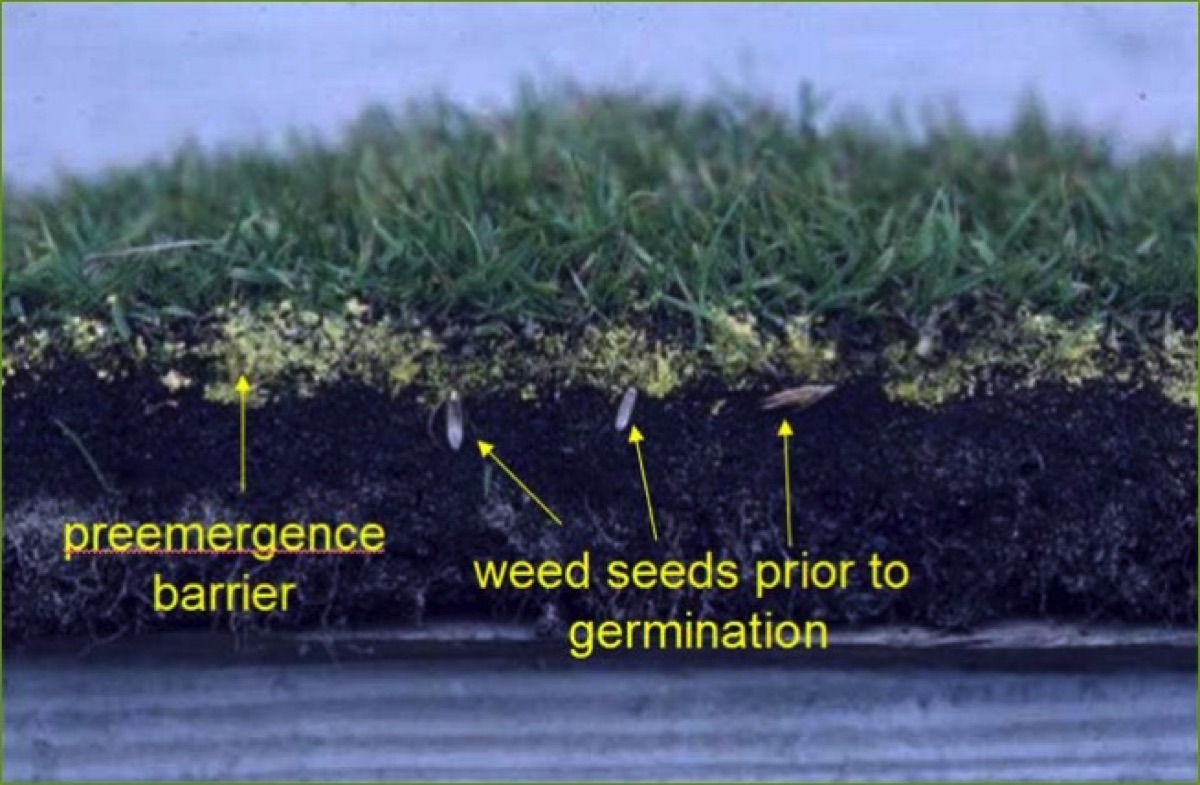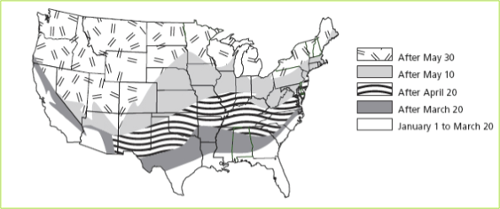Pre-emergent herbicide is an important tool in an effective weed management program, but properly timing the application can be tricky. In this article, we'll look at key principles in developing a weed control strategy, what pre-emergent herbicide can and cannot accomplish within a management program, and when to apply pre-emergent to different classifications of weeds.
Developing a Weed Control Strategy
 When you're developing a weed control strategy for a property, an important detail to impress upon your customer is that it's not possible to completely eliminate weeds with a single application or cultural practice. There is no silver bullet that kills all weeds and an effective program adjusts to the needs of the property on a seasonal or annual basis.
When you're developing a weed control strategy for a property, an important detail to impress upon your customer is that it's not possible to completely eliminate weeds with a single application or cultural practice. There is no silver bullet that kills all weeds and an effective program adjusts to the needs of the property on a seasonal or annual basis.
All weeds have a survival strategy and cannot be completely eliminated because they have different life cycles and methods of reproduction. Seeds can lay dormant for years before they germinate, surviving drought, fire, and herbicide applications. Even if you were to completely clear a property of seeds, seed and vegetative propagules can easily be transported to the property by wind, water, animals or human activity.
As you're developing or adjusting your weed control strategy, it's important to ask yourself the following questions:
-
What weeds do you want to control?
-
Is the goal to prevent these weeds, to eradicate them, or both?
-
Are there cultural practices that could help reduce the presence of the weeds?
-
What are the life cycles of the weeds, and when is the proper timing for a pre-emergent herbicide application?
-
What desired plants are on the property, and are the herbicides you're considering safe/labeled for those plants?
How Pre-Emergent Herbicide Works
To get a better idea of how pre-emergent works, let's look at 3 key principles of pre-emergent weed control.
Principle #1: Pre-emergent herbicides are designed to control germinating weed seeds.
As its name suggests, pre-emergent is targeted towards weeds that have not yet emerged from the soil. To get the best results and to avoid wasting time and labor cost down the road, the weeds shouldn't be visible above ground at the time of application.
Important: Pre-emergent is not designed to control existing weeds or weed seeds.
The weed will only be killed when it begins to sprout from the seed and hits the herbicide barrier. It is possible for seeds to remain dormant and not be harmed by the pre-emergent herbicide application. This is why weed control is a constant process. There will always be seeds under the surface and a portion will germinate each season. Annual applications must be made to significantly reduce large infestations.
Remember, pre-emergent herbicide can affect desirable plants. That includes turf. Caution must be taken if you're applying pre-emergent and seeding the turf in the same season. Seed first, then apply pre-emergent at least 6 weeks later to allow for lawn establishment. Or seed at least 3 months after the pre-emergent has been applied.
Principle #2: Pre-emergent must be mixed correctly and applied evenly over the target area for best results.
Pre-emergent herbicides need to be mixed correctly for the spray solution to be at the appropriate strength. Take the time to read the manufacturer's recommendations and don't forget to calibrate your sprayer!
Thorough coverage is key. Think of pre-emergents like a blanket – you need to cover an entire area through which the weed seeds cannot germinate. Spot spraying achieves nothing, as there is plenty of open space for weeds to come through. Manufacturer instructions will indicate how much product to use “per 1000 square feet” or “per acre”, which determines how much herbicide to use for each gallon of water. Note that it usually takes 1 to 2 gallons of spray solution to cover 1000 square feet.
Principle #3: Pre-emergent herbicide must be watered in.
Watering in activates the herbicide, creating a barrier just below the surface. Most products call for 0.5 inches of irrigation or rain within 21 days after application.
If you're working with a non-irrigated area or a drip zone, apply the pre-emergent just before rain is anticipated.
Applying Pre-Emergent to Different Classifications of Weeds
To know when to apply pre-emergent herbicide, it is important to know how weeds are classified, namely by their life cycles.
Weed Classification: Summer Annuals
Most well-known example: Crabgrass (Crabgrass Germination Map below)
Other examples: Lambsquarters, Mallow, Pigweed, Spurge
Life Cycle: 1 year - Germinate in spring. They flower, produce seed, then die in fall.
Pre-emergent timing: Early spring (late winter for Southern & Coastal U.S.)

Weed Classification: Winter Annuals
Most well-known example: Annual Bluegrass (Poa Annua)
Other examples: Shotweed, Chickweed, Mustards.
Life Cycle: 1 year - Germinate in fall. Flower and produce seed quickly, then die in spring.
Pre-emergent timing: Late summer/early fall (rule of thumb is by September 15th)
Need help choosing the right pre-emergent herbicide for your Spring application?
Contact your local Horizon store. We're happy to help!
Free Landscape Maintenance Guide